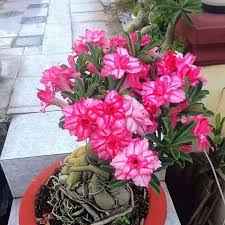**Porcelain Flower Plant: Adaptability to Harsh Environments**

The porcelain flower plant, scientifically known as Hoya, stands as a testament to nature’s resilience and adaptability, thriving in some of the harshest environments on Earth. From arid deserts to tropical rainforests, these remarkable plants have evolved unique adaptations that allow them to survive and flourish in diverse ecological conditions. In this article, we delve into the fascinating world of the porcelain flower plant and explore its remarkable ability to adapt to harsh living environments.
**1. Native Habitats and Ecological Niches:**
Porcelain flower plants are native to tropical and subtropical regions of Asia, Australia, and Africa, where they inhabit a wide range of ecological niches, from lowland forests to high-altitude mountains. In their native habitats, porcelain flower plants have evolved to withstand extreme temperatures, variable rainfall patterns, and nutrient-poor soils, allowing them to thrive in environments that may be inhospitable to other plant species. Their ability to adapt to diverse habitats and microclimates has enabled porcelain flower plants to establish themselves as dominant species in many ecosystems.
**2. Drought Resistance and Water Conservation:**
One of the most remarkable adaptations of porcelain flower plants is their ability to survive in arid and semi-arid environments with limited water availability. These plants have developed specialized mechanisms for water conservation, such as succulent leaves and stems that store moisture during dry periods. Additionally, porcelain flower plants have evolved efficient root systems that can access water deep within the soil, allowing them to withstand prolonged droughts and periods of water scarcity without wilting or dehydration.
**3. Tolerance to Low Light Conditions:**
In their native habitats, porcelain flower plants often grow in the understory of dense forests, where light levels may be low and variable. To cope with low light conditions, these plants have developed adaptations such as thick, waxy leaves that can efficiently capture and utilize available sunlight for photosynthesis. Additionally, porcelain flower plants exhibit shade tolerance, allowing them to thrive in shaded environments where other plant species may struggle to survive.
**4. Epiphytic Growth Habit:**
Many species of porcelain flower plants are epiphytes, meaning they grow on other plants or structures without deriving nutrients from the soil. This unique growth habit enables porcelain flower plants to colonize a wide range of habitats, including tree branches, rocky outcrops, and man-made structures. By growing above the ground, porcelain flower plants can access light, air, and moisture more effectively, allowing them to adapt to diverse environments and ecological niches.
**5. Cultural Significance and Horticultural Use:**
The adaptability of porcelain flower plants to harsh living environments has made them popular choices for horticultural use in gardens, landscapes, and indoor spaces. Gardeners and horticulturists value porcelain flower plants for their resilience, low maintenance requirements, and ornamental appeal. These plants are often grown as houseplants or outdoor ornamentals in regions where they are not native, adding beauty and greenery to urban environments and indoor spaces.
**6. Conclusion:**
In conclusion, the porcelain flower plant stands as a remarkable example of nature’s adaptability and resilience in the face of harsh living environments. From drought-prone deserts to shaded rainforests, these plants have evolved unique adaptations that allow them to thrive in diverse ecological conditions. By understanding the remarkable abilities of porcelain flower plants to adapt to their surroundings, we gain insight into the complex and dynamic relationships between plants and their environments. As we continue to explore and appreciate the beauty and diversity of the natural world, let us celebrate the remarkable adaptability of porcelain flower plants and their enduring presence in ecosystems around the globe.

